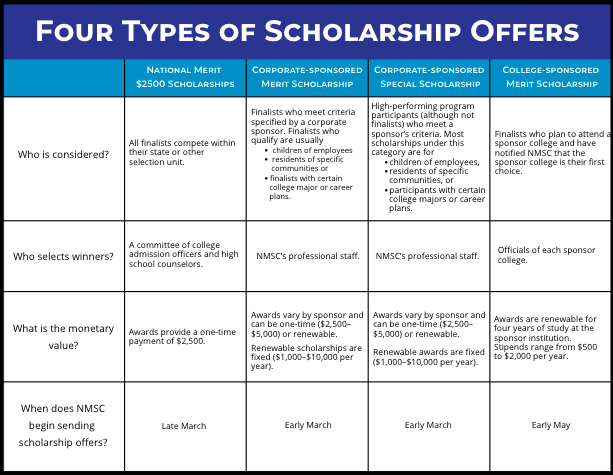
You are not the only person concerned by segregation within your school. Parents and educators often wonder what the implications for student performance are. There are also legal questions about the constitutionality of segregated schools. These issues are addressed in this article. This article also discusses the effects of segregation on student performance.
Signs of a segregated school
Although it is not easy to spot signs of segregation in schools, there are some signs that indicate that a school is having trouble with race relations. A room filled with students of one racial group is the most obvious. These students must be highly motivated and have high grades. However there are other subtle signs like students who only attend one religion or social class. Another sign of a segregated school is a classroom that has a low number of students from different races.
America's school segregation problem is still a major issue. Despite numerous efforts to integrate schools the southern states are still divided by race. The reason for this is that school districts in the southern United States are often larger and include entire counties. Integration is generally easier due to the high proportion of white students in southern schools districts. Recent years have seen segregation in these large districts start to break down. White neighborhoods tried to form all-white school zones, and conservative legislatures are considering dividing up large districts.

Student performance affected by segregation
Studies have shown that students perform worse when they are socially marginalized, especially if they live in highly-poverty areas. This disadvantage is greater for families that have lived in the community for generations. Because housing policy directly impacts education policy, desegregation is needed to improve educational outcomes both in affluent as well as low-income neighborhoods. Unfortunately, the history of racial segregation has hindered efforts at desegregating schools.
Research into the effects of segregation on academic performance is limited, and should be expanded to examine the impact of various forms of segregation on student achievement. Study should be centered on the socioeconomic implications of segregation. These studies could aid in educational policy decisions and reduce negative peer effects from segregated schools.
Constitutionality of segregated schools
The Brown case is one of the most important cases in American history. It challenged the constitutionality of segregated schools. Proponents of the case were hounded and harassed, and they were kicked off white landowners' property. The plaintiffs were South Carolina sharecroppers and filed the case against segregated school systems.
In the beginning, desegregation efforts focused on busing black students into predominantly white schools. These busing programs proved unpopular among both blacks and whites. Additionally, these schools were often located in areas with limited resources and poorer communities. Busing programs caused white families to move to the suburbs. The federal government eventually made it possible for schools and colleges to demonstrate progress in desegregation.

In 1951, Brown v. Topeka was brought before the U.S. District Court. The NAACP, at the time, argued that segregated schools sent a unequal message about black children. The Topeka, Kansas board of education argued that segregation was a part of many aspects of daily life, in spite of the court's decision. For example, black students didn't learn the names and experiences of well-known black people.
FAQ
What are some possible ways to receive scholarships?
Scholarships can be granted to help cover college expenses. There are many types available in scholarships. These include:
-
Federal Grants
-
State Grants
-
Student Loans
-
Work Study Programs
-
Financial Aid
Federal grants are made directly by the U.S. government. Most federal grants require applicants fulfill certain requirements. You will need to prove financial need.
State grants can be offered by the individual states. Some states offer these funds based on financial need; others award money for specific reasons.
Banks and other lending institutions issue student loans. Students typically borrow money to cover costs such as tuition and living expenses.
Work-study programs are designed to encourage employers to hire qualified students. Employers are required to pay employees at least minimum wage.
Financial aid allows low-income families to afford college by paying for all or part of their tuition costs.
What is a trade school?
Trade schools can be an alternative for those who have not had success in traditional higher education to obtain a degree. They provide career-oriented programs to help students prepare for specific occupations. The programs offer two-year courses in one semester. Students then go on to a paid apprenticeship program, where they are trained in a specific job skill set and given practical training. Trade schools include vocational schools, technical colleges, community colleges, junior colleges, and universities. Some trade schools also offer associate degree programs.
What is the difference between college or school?
Schools are typically divided into classes or grades with a teacher who teaches students. Colleges offer more specialized programs, and many include university-level classes. While schools are more focused on fundamental subjects, colleges might offer a range of subjects such as arts, science and languages. The curriculum at both levels is designed to prepare students for further study at higher levels.
How do I select my major?
Students choose their majors based upon their interests. Some students prefer to major in a subject they enjoy doing because they will find this easier than studying something else. Some people want to work in a field that has no job opportunities. Others decide to major because they want to earn money while studying. No matter your reasons for choosing a major, you should consider the type of job that you might be interested in after you graduate.
There are many ways to get information about different fields of study. Talk to your family and friends about their experiences. Check out newspapers and magazines for possible careers. Ask your guidance counselor about possible career options. Visit your community center or library to find out more about Career Services. Check out books on various topics from your public library. Search the Internet for specific career-related websites.
How can I apply to college
There are many ways to apply for college. Get started by talking to your high-school guidance counselor or admissions representative. Many high school applications can now be submitted online. Contact local colleges for more information. Most colleges will accept applications over the Internet through their website.
If you choose to apply via mail, fill out the application. You will also need to write a personal story and attach copies of all documents. The personal statement gives you an opportunity to share why you want to attend this particular institution and how it would benefit you. It also helps the admissions committee understand your goals and motivations.
Download sample essays from our website.
How much does homeschooling cost?
Homeschooling comes with no fees. Some families charge between $0-$20 per lesson. Other families offer free services.
But homeschooling is not easy. It requires commitment and dedication. Parents should be able to dedicate enough time to their children.
They also need to have access book, supplies, books, and other learning resources. Many homeschoolers need to access community programs and events to complement their curriculum.
Parents should think about transportation costs, tutors, and other activities.
Homeschoolers must also plan ahead to take part in field trips, vacations, or special occasions.
What is the best way to start teaching early childhood?
It is important to decide whether you want to enter early childhood education. You will need to earn your bachelor's degree if you decide to pursue a career in early childhood education. Some states require students hold a master's degree.
You may also need to attend classes during summer months. These courses will cover subjects such as curriculum development and pedagogy (the art or teaching).
Many colleges offer associate degrees that lead directly to a teaching certificate.
While some schools offer certificates or bachelor's degrees in early childhood education, others only offer diplomas.
You may not require additional training if you are planning to teach at your own home.
Statistics
- They are more likely to graduate high school (25%) and finish college (116%). (habitatbroward.org)
- In most developed countries, a high proportion of the population (up to 50%) now enters higher education at some time in their lives. (en.wikipedia.org)
- And, within ten years of graduation, 44.1 percent of 1993 humanities graduates had written to public officials, compared to 30.1 percent of STEM majors. (bostonreview.net)
- These institutions can vary according to different contexts.[83] (en.wikipedia.org)
- Globally, in 2008, around 89% of children aged six to twelve were enrolled in primary education, and this proportion was rising. (en.wikipedia.org)
External Links
How To
How do I enroll in homeschooling?
Homeschooling refers to the education of children at home. It involves teaching them through different methods, such as reading books, watching videos and doing exercises. It is considered one of the most effective ways of learning because it enables students to learn things at their own pace and develop skills like problem-solving, critical thinking, creativity, self-discipline, communication, and social skills.
People who wish to educate their children at their home are more common than ever, particularly parents who work full-time but don't have enough time for their children. In this case, they can opt for homeschooling, which allows them to dedicate their time and energy to their children's education without having to worry about finding someone to take care of their children while they go to work.
Homeschooling offers many benefits. One of them is the ability for students to develop critical thinking and creative skills. Another is their ability increase their knowledge and language skills.
Homeschooling is designed to give quality education to students so that they can succeed as adults. There are certain prerequisites that must be met before you start homeschooling. This includes determining whether your child qualifies to attend private or public schools. The type of curriculum that you choose to use for homeschooling is an important consideration. There are several types of curricula available online that you can choose from depending on your preference, budget, and level of expertise. You can choose from Waldorf, Montessori or Waldorf curricula. Before you can start homeschooling, you need to ensure you have the necessary resources to support your child's learning. This involves purchasing books, educational material, computers, digital devices, toys, games and musical instruments. You can buy these items online or purchase them from local stores.
Once you have completed these steps, you can apply to become a homeschooling mom. The best way to do this is to contact your state department of education and ask for guidance. They will assist you with filling out forms and provide guidance on how to get started homeschooling.